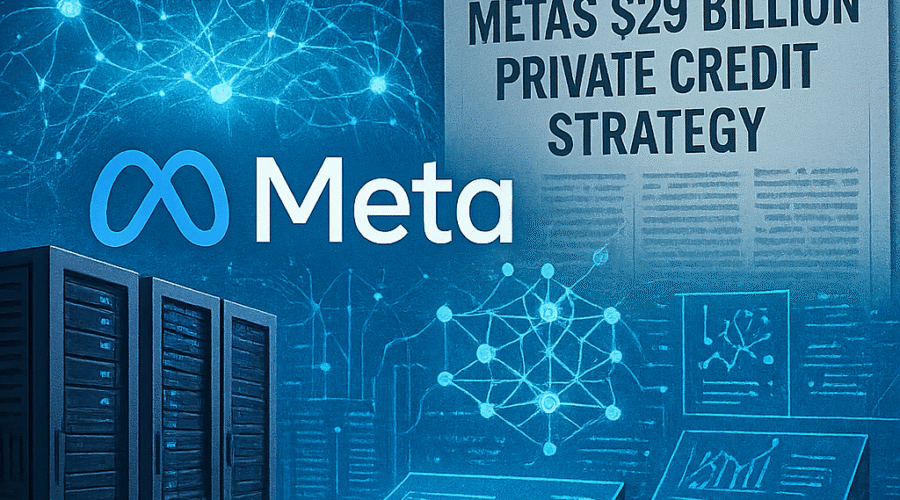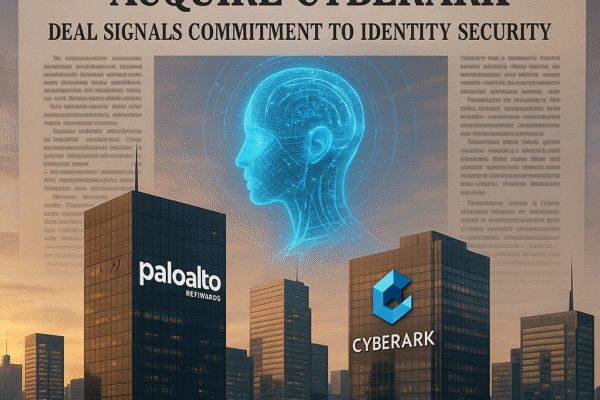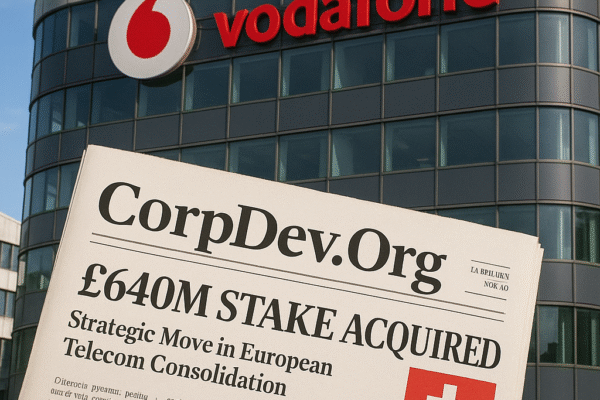Meta Platforms’ pursuit of $29 billion from private capital firms marks a pivotal shift in technology financing, with $26 billion in debt and $3 billion in equity earmarked for U.S.-based AI data center expansion[1][3][5][9]. This unprecedented private credit arrangement—involving Apollo Global Management, KKR, Brookfield, Carlyle, and PIMCO—signals a strategic departure from traditional public markets as Meta accelerates its $65 billion AI infrastructure commitment[1][9][12][14]. The deal emerges amid an industry-wide capital expenditure surge, with Microsoft allocating $80 billion and Amazon increasing investments beyond $75 billion, reflecting a broader reallocation toward compute resources essential for AI dominance[1][9][13].
💼 Seasoned CorpDev / M&A / PE expertise
Deal Architecture and Capital Stack Innovation
Structured Financing Mechanics
Morgan Stanley’s advisory role centers on structuring the $26 billion debt component for secondary market liquidity, potentially through tradeable instruments that maintain private credit’s flexibility while enhancing investor exit options[1][9]. The $3 billion equity tranche represents an unusual concession for Meta, typically averse to dilution, indicating the strategic premium placed on securing specialized data center financing partners[3][4][8]. This bifurcated approach allows Meta to leverage private credit’s longer tenors—often matching data centers’ 20-year asset lives—while avoiding public debt markets’ volatility and disclosure requirements[4][8]. Apollo’s leadership in the consortium builds upon its February negotiations for a $35 billion Meta infrastructure package, demonstrating private equity’s deepening specialization in tech asset financing[1][9].
Investor Consortium Dynamics
The participation of credit-focused firms like PIMCO alongside traditional private equity giants reflects convergence in infrastructure investment strategies, with each firm contributing distinct expertise: Apollo in structured debt, KKR in operational scaling, and Brookfield in renewable energy integration[1][7][8]. This syndicate structure distributes risk across multiple balance sheets while enabling coordinated oversight of Meta’s Louisiana data center project, which features a $3 billion Entergy partnership and 20-year tax abatement[4][8]. The consortium’s formation responds to private credit’s record $1.2 trillion in dry powder, with firms increasingly targeting tech infrastructure for its inflation-linked returns and essential service characteristics[4][8].
Strategic Imperatives in the AI Arms Race
Compute Capacity as Competitive Moat
Zuckerberg’s $65 billion 2025 capex commitment targets deployment of 1.3 million GPUs by year-end, requiring data centers capable of 1GW computing capacity—infrastructure that directly enables Llama 4 model training and Meta AI’s bid for 1 billion users[12][13][14]. This buildout counters OpenAI’s reliance on Microsoft Azure and Google’s TPU ecosystem, creating proprietary infrastructure that reduces cloud dependency while optimizing for Meta’s specific AI workloads[4][8][14]. The Scale AI acquisition complements this strategy by securing high-quality training data pipelines, with Scale’s CEO joining Meta’s AGI division to integrate labeling expertise directly into model development[1][9].
Energy and Geopolitical Dimensions
Louisiana’s project exemplifies the energy-transition calculus underpinning AI infrastructure, combining Entergy’s nuclear baseload with renewable procurement to meet sustainability targets while ensuring 99.999% uptime required for continuous training cycles[4][8]. Site selection further reflects supply chain resilience priorities, avoiding semiconductor concentration risks in Asia while benefiting from CHIPS Act subsidies—a consideration heightened by U.S.-China tech decoupling[8][14]. These factors transform data centers from cost centers into strategic assets, with Meta’s infrastructure now positioned to support third-party AI services should regulatory pressures necessitate platform openness[8][14].
Private Credit’s Evolution as Tech Enabler
Structural Advantages Over Public Markets
Private credit’s 7-10 year maturities align with data centers’ depreciation schedules, unlike public bonds’ refinancing risks, while covenant flexibility accommodates the unpredictable capex profiles of AI infrastructure[4][8]. The asset class’s “patient capital” ethos proves particularly valuable for Meta’s staggered buildout, where phased commissioning (e.g., Louisiana’s 1GW initial phase) creates irregular cash flows that traditional lenders would penalize[4][8]. This symbiotic relationship extends to pricing: despite higher nominal rates than investment-grade bonds, the absence of mark-to-market volatility and prepayment flexibility provides Meta with predictable liability management[8][11].
Broader Industry Implications
Meta’s template is already influencing peers, with Apple exploring similar structures for its Arizona AI cluster and Amazon negotiating with Ares Management for logistics automation facilities[8][11]. This migration toward private credit could redirect 30-40% of big tech’s $300 billion 2025 infrastructure spend away from corporate bond markets, fundamentally reshaping tech finance ecosystems[4][8]. For private equity firms, these deals offer 12-15% IRRs through bespoke instruments like revenue-sharing notes tied to specific data center utilization rates—hybrid structures blending debt yields with infrastructure equity characteristics[4][8].
Execution Risks and Mitigation Frameworks
Financial Engineering Vulnerabilities
The $26 billion debt load introduces refinancing exposure should SOFR increase 150+ bps before 2030, potentially adding $2 billion annually in interest costs—a scenario mitigated through interest rate collars negotiated with consortium banks[4][8]. Construction timeline slippage presents greater concern, with Louisiana’s labor shortages already delaying critical path elements by 6-8 weeks, potentially deferring revenue generation from Meta’s AI services[4][8]. Consortium members address this through contingency facilities: Apollo has committed $4 billion in backup financing, while Brookfield’s infrastructure arm provides turnkey construction crews from Canadian hydro projects[8][9].
Technological Obsolescence
Rapid AI accelerator evolution (e.g., NVIDIA’s Blackwell architecture) risks rendering facilities outdated before commissioning, a threat countered by modular design allowing hot-swappable compute bays and liquid cooling systems adaptable to future chip thermal profiles[4][8]. More critically, Meta’s dual-track infrastructure strategy combines self-built facilities with partnerships like Scale AI’s distributed data processing network, ensuring redundancy should centralized data centers underperform[1][8]. This “hub-and-spoke” model represents a $7 billion hedge against technological lock-in, diversifying compute across geography and architecture[8][14].
Sector-Wide Capital Allocation Implications
Valuation and Funding Hierarchy Shifts
Meta’s financing signals a broader repricing of tech assets, with infrastructure-heavy firms commanding 20-30% valuation premiums over software-only peers as investors reward tangible AI enablers[4][8]. This realignment is evident in the S&P 500 Infrastructure Index’s 18% YTD outperformance versus traditional tech indices, reflecting capital migration toward companies controlling physical AI inputs[8][11]. Private equity portfolios are consequently rebalancing: KKR has reduced consumer tech exposure by 22 percentage points since 2024, reallocating to data center REITs and semiconductor supply chain companies[4][8].
Regulatory and Competitive Landscapes
The FTC’s scrutiny of Microsoft-OpenAI collaborations establishes precedent for infrastructure control investigations, potentially triggering DOJ review of Meta’s private credit consortium under interlocking directorate guidelines[8][14]. Antitrust concerns are partially mitigated by the consortium’s passive creditor status, though “golden share” provisions could attract scrutiny if lenders gain operational influence[8]. Competitively, the deal widens Meta’s infrastructure advantage over smaller AI players, with Anthropic and Mistral facing 30-40% higher compute costs due to less favorable financing terms—a disparity that may accelerate industry consolidation[4][8].
Conclusion: The New Infrastructure Imperative
Meta’s $29 billion private credit play transcends financing innovation, representing a fundamental reorientation toward infrastructure as the primary AI competitive lever. This strategy leverages private capital’s structural advantages to build physical moats around AI capabilities, with data centers joining data and algorithms as core strategic assets. The approach carries significant execution risk—particularly regarding technological velocity and regulatory acceptance—but offers potentially insurmountable scale advantages in the race for AI dominance. For investors, this signals opportunity in three concentric circles: direct infrastructure providers (chipmakers, REITs), private credit intermediaries (Apollo, KKR), and energy transition enablers (advanced cooling, modular nuclear). As Zuckerberg deploys his $65 billion war chest, the winners will be those recognizing that in the AI era, bytes flow where concrete pours and capital stacks align.
Sources
https://www.investing.com/news/stock-market-news/meta-seeks-29-billion-from-private-capital-firms-for-ai-data-centers-ft-reports-4115121, https://www.marketscreener.com/quote/stock/META-PLATFORMS-INC-10547141/news/Meta-Platforms-Planning-to-Raise-29-Billion-for-AI-Data-Centers-50356991/, https://www.investing.com/news/stock-market-news/meta-seeks-29-billion-in-private-funding-for-ai-expansion--ft-93CH-4115119, https://www.ainvest.com/news/meta-29-billion-gamble-private-credit-fuel-ai-infrastructure-arms-race-2506/, https://www.aol.com/news/meta-seeks-29-billion-private-195257503.html, https://in.tradingview.com/news/reuters.com,2025:newsml_L4N3SU159:0-meta-seeks-29-billion-from-private-capital-firms-for-ai-data-centers-ft-reports/, https://www.tradingview.com/news/reuters.com,2025:newsml_L4N3SU15D:0-meta-seeks-29-billion-from-private-capital-firms-for-ai-data-centers-ft-reports/, https://www.ainvest.com/news/meta-29-billion-ai-infrastructure-play-bold-bet-private-credit-dominance-ai-era-2506/, https://www.hindustantimes.com/world-news/us-news/meta-seeks-29-billion-from-private-capital-firms-for-ai-data-centers-report-101751064918116.html, https://www.marketscreener.com/quote/stock/META-PLATFORMS-INC-10547141/news/Meta-seeks-29-billion-from-private-capital-firms-for-AI-data-centers-FT-reports-50356771/, https://finimize.com/content/meta-platforms-launches-29-billion-ai-data-center-drive, https://www.theinformation.com/briefings/meta-talks-raise-29-billion-private-equity-firms, https://economictimes.com/tech/artificial-intelligence/what-mark-zuckerberg-said-about-his-60-65-billion-ai-investment-to-compete-with-openai-google/articleshow/117545446.cms, https://www.foxbusiness.com/technology/facebook-owner-investing-65-billion-ai-2025





